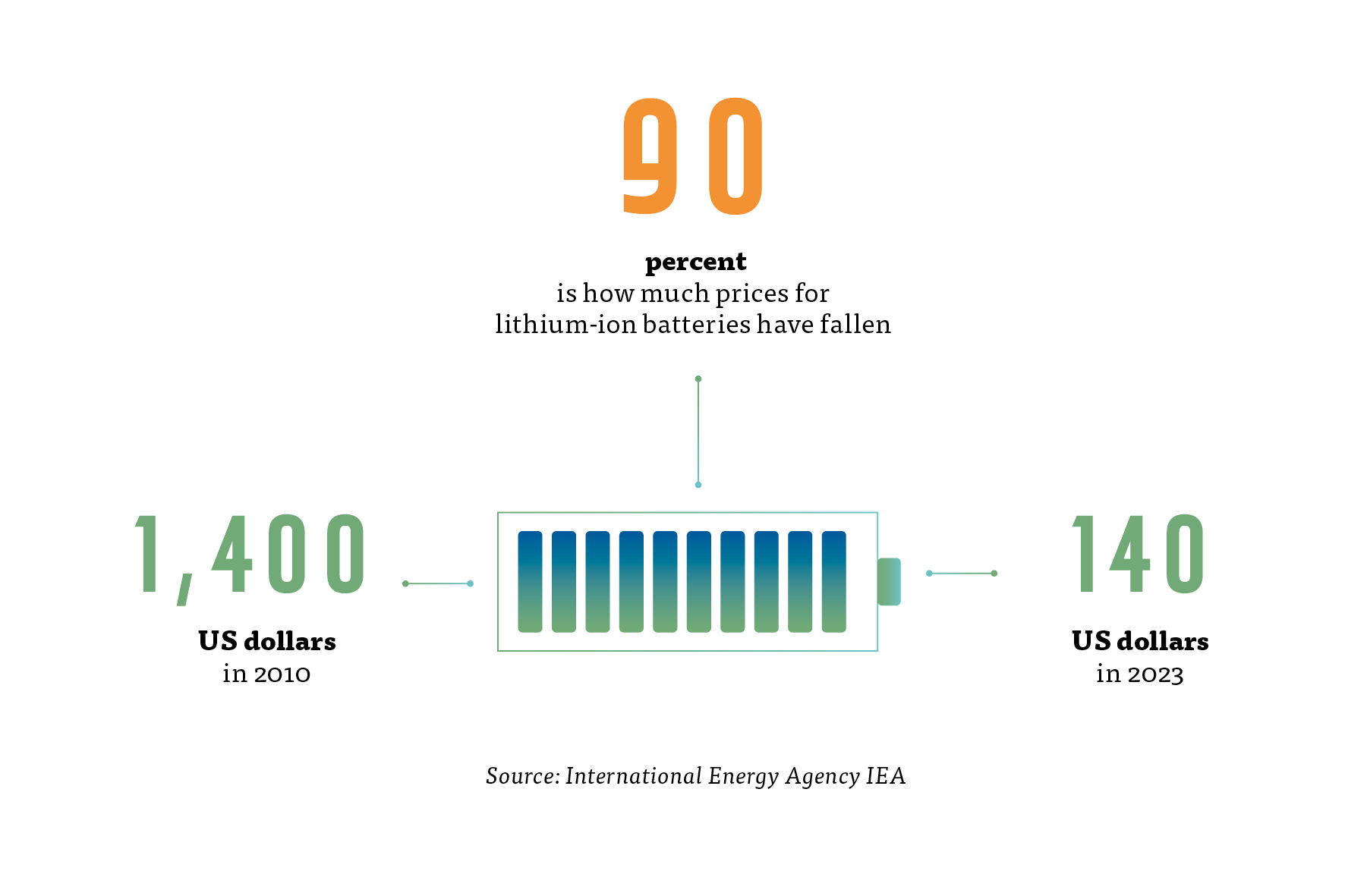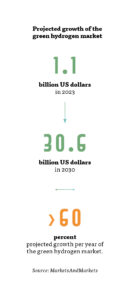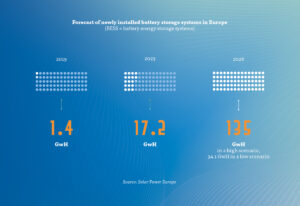The storage of energy is an essential component of the All Electric Society. On the one hand, it enables off-grid power supply for mobile devices, from smartwatches to electric vehicles. On the other hand, it plays a crucial role in balancing the fluctuating energy generation from renewable sources with current demands.
The replacement of conventional power plants based on fossil fuels with renewable energies such as photovoltaics and wind power leads to a highly variable electricity supply, with moments of over- and under-supply. According to market analysts at McKinsey, by 2030, the peak capacity of renewable energies in the European Union could exceed the average demand of 320 gigawatts by three to four times. Today, when there is an oversupply, energy production is often curtailed, meaning the potential of renewable energy sources is not fully exploited.
To change this, energy storage systems are needed to absorb excess electricity. Hydropower plants are currently the most widely used storage technology. In 2020, global capacity was around 8,500 gigawatt hours, accounting for over 90 percent of total global electricity storage. According to the International Energy Agency (IEA), to achieve net-zero goals, the total energy storage capacity worldwide must increase sixfold by 2030, with 90 percent of the growth expected to come from batteries and most of the rest from pumped storage power plants.
Batteries essential for grid stability
“The electricity and transport sectors are two key pillars for bringing down emissions quickly enough,” said IEA Executive Director Fatih Birol. “Batteries will provide the foundations in both areas, playing an invaluable role in scaling up renewables and electrifying transport while delivering secure and sustainable energy for businesses and households.”
A wide variety of battery technologies are used. Today, lithium-ion battery storage systems are the most widespread. Lithium iron phosphate (LFP) batteries, in particular, are the preferred choice for grid storage in terms of cost and energy density. Lithium-ion batteries with higher energy density, such as nickel-cobalt-aluminium (NCA) and nickel-manganese-cobalt (NMC), are popular for energy storage in households and other applications with limited space. However, the compact lithium-ion batteries that have been very successful so far have become extremely costly and controversial to produce due to the energy required for manufacturing and the increased demand for valuable and increasingly scarce raw materials like lithium and cobalt.

Alternatives to Lithium
A roadmap published by Fraunhofer ISI in autumn 2023 examines the role that non-lithium-based battery technologies could play. According to the study, alternatives such as metal-ion, metal-sulfur, metal-air, and redox flow batteries could provide relief in selected markets and applications. Additionally, sodium-ion technology is gaining increasing importance. Its longer storage time, lower costs, and the current state of supply chains in other areas make this technology increasingly attractive, as it does not rely on cobalt, nickel, or lithium.
Flow batteries also show great potential, as they do not experience performance degradation for 25 to 30 years and can be adjusted to the specific energy storage needs with limited investments.
In the transport sector, solid-state batteries could be an exciting alternative in the future. They are similar in structure to conventional lithium-ion batteries, with the key difference being the solid electrolyte instead of a liquid one. Solid-state batteries promise very high energy density in electric vehicle batteries, potentially leading to greater range, especially when using lithium anodes or “anode-less” cell concepts. Furthermore, the absence of liquid electrolytes in solid-state batteries reduces the risk of hazards in accidents, as they mostly use non-flammable components. However, they have a shorter lifespan, with their capacity decreasing with each charge cycle.
Second pillar Hydrogen
Other energy storage methods, such as compressed air or gravity storage, play a relatively minor role in current electricity systems. However, hydrogen is likely to become far more important as a storage medium for excess energy in the future. It has the potential for seasonal storage of renewable energy, can be used directly in the transport sector or as a fuel through eFuels, and serves as a CO2-free process gas in industrial processes such as ammonia production or methanation. The classic method of producing hydrogen is electrolysis, where water is split into hydrogen and oxygen using electricity. If the electricity required for electrolysis comes from renewable sources such as photovoltaics, green, CO2-neutral hydrogen is produced.
“For the decarbonisation of the energy system, we need to utilise green molecules in addition to electrons if we are to achieve our climate goals. The local conversion of renewable energies not only supplies industry and businesses with green hydrogen but also helps to relieve the strain on power grids,” says Christoph Ullmer, Head of the Innovation Competence Centre at Thüga AG. This is highlighted in a report commissioned by the municipal participation and consulting company in collaboration with E-ON.
Photoelectrically produced Hydrogen
Especially for decentralised hydrogen production, direct solar water splitting, known as photoelectrochemical cell (PEC), offers an exciting alternative to conventional, complex electrolysers. In the Neo-PEC joint project, researchers from three Fraunhofer institutes have developed a modular solution that enables highly flexible hydrogen production and supply using solar energy. The core of the development is a tandem PEC module, in which charge carriers are released in a semiconductor by sunlight. These are directly used for water splitting. Hydrogen and oxygen are produced directly at the surface of the illuminated semiconductors.
Strategic investment
The European hydrogen industry is making substantial investments in new projects. Currently, there are 254 renewable hydrogen projects in the European Union, with 170 in operation and 84 under construction.
“Hydrogen is a strategic component of the transition to clean energy in the EU,” emphasises Maroš Šefčovič, Vice-President for the European Green Deal, Interinstitutional Relations, and Foresight. “It is not only crucial for achieving our net-zero goals but also for maintaining our competitiveness and preserving Europe’s position as a leading global economic power.”





